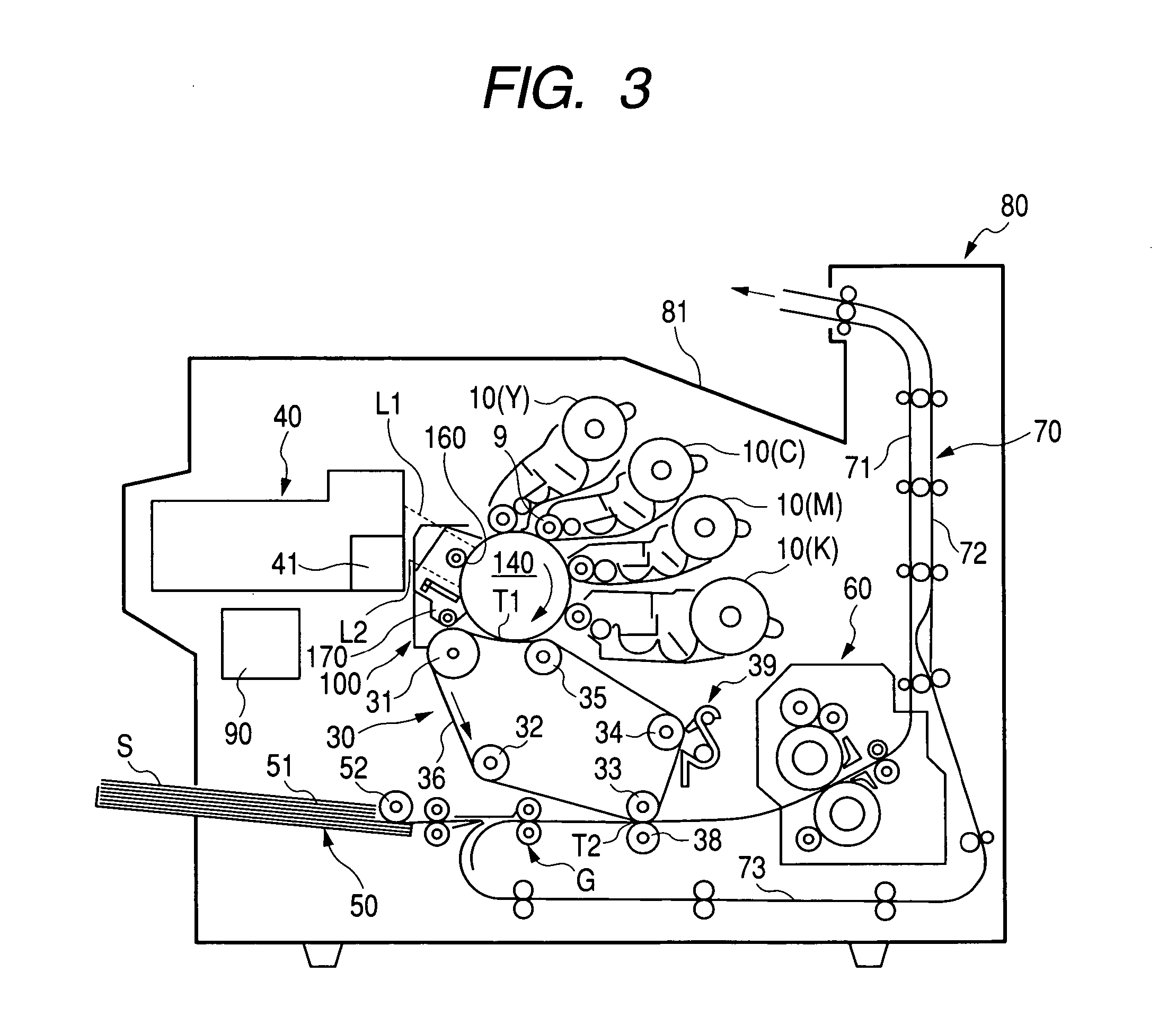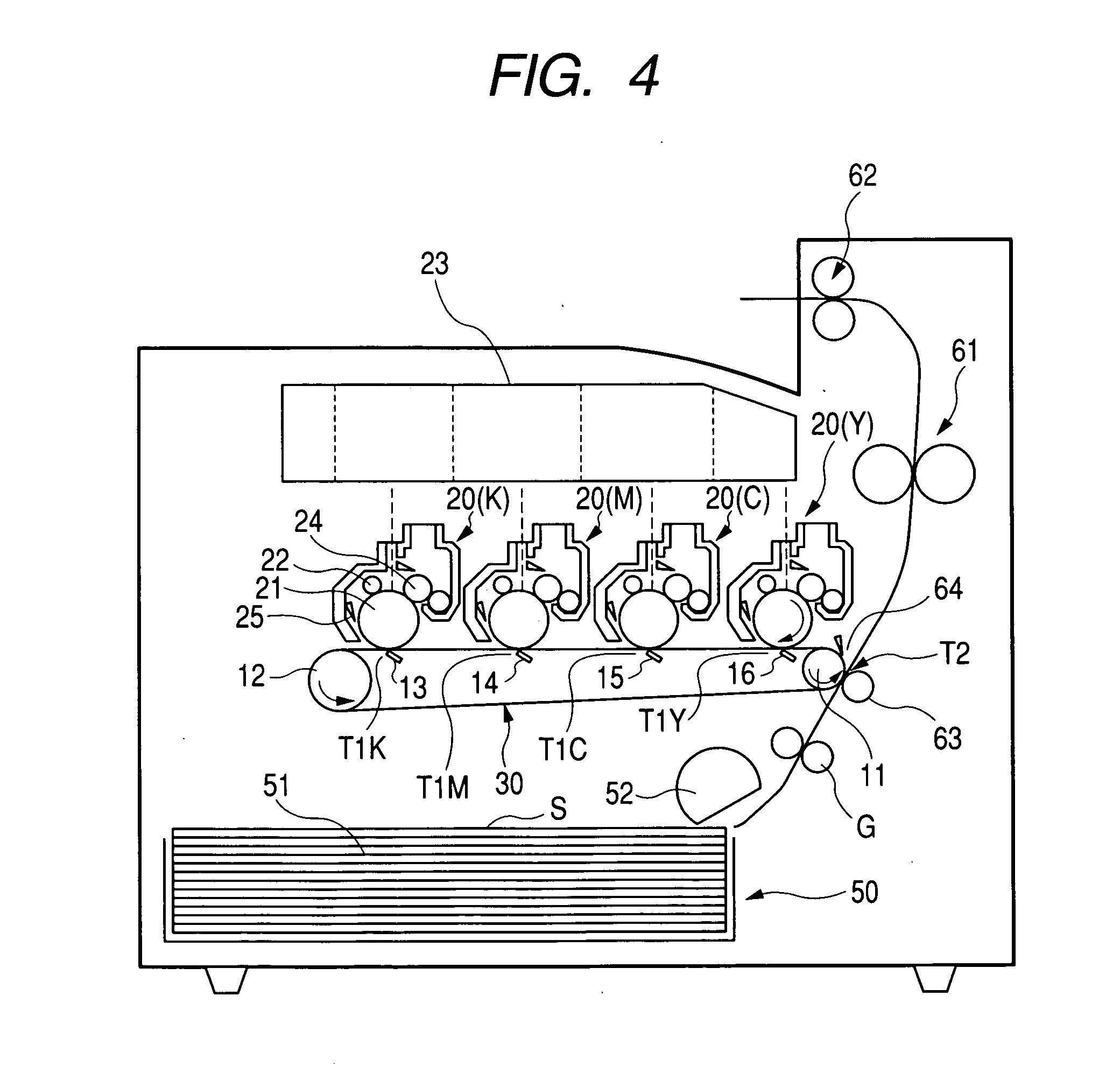Negatively chargeable toner, method for producing the same, and full color image forming apparatus using the negatively chargeable toner
- Summary
- Abstract
- Description
- Claims
- Application Information
AI Technical Summary
Benefits of technology
Problems solved by technology
Method used
Image
Examples
experimental example 1
[0191] Hydrophobic fine silica particles (specific surface area by the BET method: 300 m2 / g, mean primary particle size: 7 nm) treated with hexamethyldisilazane was added to and mixed with toner mother particles 2 obtained above in an amount of 0.1% by weight, and then, external additives shown in Table 1 described below were each added to the resulting fine silica particle-coated toner in an amount of 0.2% by weight to prepare five kinds of magenta toners 2-1 to 2-5, respectively.
[0192] Measurement of the Rate of Liberation of Various External Additives from Toner Mother Particles
[0193] The rate of liberation of the various external additives shown in Table 1 described below was determined using a particle analyzer (manufactured by Yokogawa Electric Corporation, PT1000). The results thereof are shown in Table 2. The rate of liberation as used herein is calculated from the number of elements detected by the measurement with the particle analyzer, and defined by the following equat...
experimental example 2
[0207] Hydrophobic fine silica particles S (mean primary particle size: 12 nm) treated with hexamethylsilazane and hydrophobic fine silica particles L (mean primary particle size: 40 nm) similarly subjected to hydrophobic treatment was added to and mixed with toner mother particles 5 prepared above in amounts of 0.5% by weight and 0.5% by weight, respectively. Then, additives other than silica shown in Table 6 were added to and mixed with the resulting fine silica particle-coated toners at addition ratios (% by weight) described in Table 6 to prepare seven kinds of cyan toners 5-1 to 5-7. The evaluation results of image characteristics by an image formation test using each cyan toner are shown in Tables 7 and 8.
TABLE 6TonerCompounding RatioNo.Combination of Additives(% by weight)5-1Silica S / Silica L / alumina / titania / StCaS0.5 / L0.5 / 0.2 / 0.5 / 0.25-2Silica S / Silica L / AlSi / TiSi / StCaS0.4 / L0.5 / 0 / 0.5 / 0.25-3Silica S / Silica L / AlSi / TiSi / StCaS0.4 / L0.5 / 0.01 / 0.2 / 0.25-4Silica S / Silica L / AlSi / TiSi / S...
experimental example 3
[0211] The external additives were added to and mixed with toner mother particles 2, toner mother particles 3 and toner mother particles 4 in the same manner as with cyan toner 1-5 of Experimental Example 1 to prepare a magenta toner, a yellow toner and a black toner, respectively.
[0212] Then, using a 4-cycle color printer of an intermediate transfer medium process shown in FIG. 3 in which an elastic photoreceptor of organic photoreceptor (OPC2) was used and which was equipped with the developing rollers, the regulating blades and intermediate transfer belt 1, each developing unit was filled with each toner obtained above, and an image formation test was carried out by a contact single-component developing process. As for the setting order of the developing devices, a first developing device filled with the magenta toner, a second developing device filled with the yellow toner, a third developing device filled with the cyan toner and a fourth developing device filled with the black...
PUM
 Login to View More
Login to View More Abstract
Description
Claims
Application Information
 Login to View More
Login to View More - R&D
- Intellectual Property
- Life Sciences
- Materials
- Tech Scout
- Unparalleled Data Quality
- Higher Quality Content
- 60% Fewer Hallucinations
Browse by: Latest US Patents, China's latest patents, Technical Efficacy Thesaurus, Application Domain, Technology Topic, Popular Technical Reports.
© 2025 PatSnap. All rights reserved.Legal|Privacy policy|Modern Slavery Act Transparency Statement|Sitemap|About US| Contact US: help@patsnap.com



